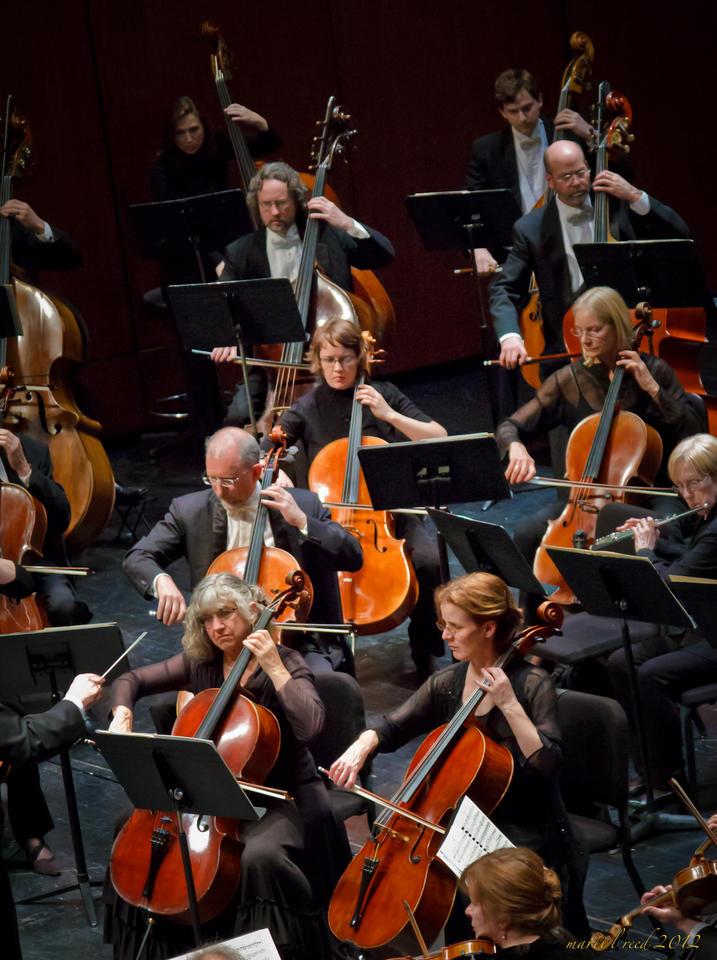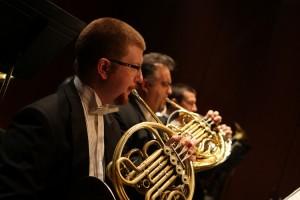Blogrige
The Official Baldrige Blog

Think back to the last time you experienced a live orchestra. How did the music make you feel?
Some say music experienced in a live venue, especially classical music, can transcend you to another time and place, to a world of beauty or tragedy or even suspense. An orchestra can reawaken senses and emotions. Researchers say, if you close your eyes, live music can actually have physiological effects and help us learn, focus attention, and feel rejuvenated.
So why are so many American orchestras in a time of crisis? See, for example, “American Orchestras: A Time of Crisis or Rebirth?”, “Why Music Is Important: The Orchestra Crisis,” “Who's Afraid of Symphony Orchestras?”, and “Cities and Symphonies: Will the Music Stop?” According to Anne Midgette of The Washington Post, “Given the turmoil across the country as orchestras battle financial duress, and strikes and lockouts lead to concert cancellations, some might ask what exactly there is to celebrate.”
But there is something to celebrate in New Mexico. These journalists may not have heard the story of the New Mexico Philharmonic (NMPhil) and its board of directors, led by president Maureen Baca, who also happens to be a Baldrige Alumni Examiner. NMPhil was created from the bankruptcy of its predecessor and has become the flagship classical music organization in the state, performing for more than 40,000 audience members each season and becoming a vital part of New Mexico’s cultural scene at a time when orchestras around the country are failing.
So how did Baca and her colleagues do it?
In 2011, Baca, who said she felt a personal loss when the 79-year-old New Mexico Symphony Orchestra declared bankruptcy, received an invitation to join the newly incorporated NMPhil. But she said she would accept only if the organization would let her help it improve its processes—if they existed at all. She used the Baldrige Excellence Framework to bring clarity to purpose and process; a common language for all involved; and a focus on outcomes, with clear strategic objectives that included measurable action plans.
It all started in April 2011 when the New Mexico Symphony Orchestra, founded in 1932, declared bankruptcy, the path to which was paved during the 2008 recession (this has also been the fate of many other U.S. orchestras). In addition, analysis indicates an increasing trend in local, regional, and national foundations reducing or eliminating funding to the arts. Baca said this trend stems from the reduction and elimination of arts education in most public schools 20 to 30 years ago; people now in senior leadership positions in companies and foundations grew up with little to no background in the arts. And, said Baca, the New Mexico Symphony Orchestra had faced a perfect storm: budget growth beyond community capacity, dramatic changes in the economy, unsustainable overhead, labor/management issues, personality/individual issues, and no apparent systematic processes.
Right before the orchestra went bankrupt, NMPhil was incorporated. Following the New Mexico Symphony Orchestra bankruptcy, NMPhil was advised by its lawyers to “go live,” activate its board of directors, and raise funds to purchase the orchestra’s music library. By the fall of 2011, NMPhil had successfully raised over $100,000 to purchase key assets to begin operations, hired an executive director from restricted funds from an anonymous donor, and began performing its first season.

Baca said the work to sustain NMPhil began in 2011 by helping the organization understand process: linked activities that can be repeated and improved; produce results for the organization; and include combinations of people, techniques, and improvements in a defined series of steps. In this work, she used her life-long passion for classical music, passion for Baldrige and process-based organizations, and 20+ years’ experience applying the Baldrige framework to organizations.
At the start, Baca said her success came from keeping it simple, being patient, and showing how processes can make life better. Meetings started going from having vague minutes, unclear decisions, and little to no follow up, to being structured, with clarity of decisions, action items identified and closed, and improved outcomes and satisfaction. She said board members saw immediate results, and their work became more productive; “they did not even know that we had started on a quality journey with Baldrige.”
The focus on process continued through the selection of a new executive director and strategic planning (this is where she was able to really create believers, said Baca). This work was especially important, said Baca, because NMPhil did not have a strategic plan, vision, mission, objectives, goals, or action plans. As part of strategic planning, all key stakeholders were interviewed for data gathering, self-assessments of strengths and opportunities for improvement, and NMPhil’s challenges and advantages. An environmental scan of external factors was also done. The biggest result, said Baca, was that the executive director and board became believers in the value of process.
From here, said Baca, a Baldrige based, process-focus culture was born, beginning with workforce-focused processes, including for volunteers; product/service processes; and a new focus on measurement and management by fact.
In 2013, based on the Venezuelan concept “teach children the beauty of music, and music will teach them the beauty of life,” NMPhil began the Young Musician Initiative, an in-depth music education program for economically challenged public school students offered in partnership with Albuquerque Public Schools (APS). But more than just music education happened. Students in the Young Musician Initiative now outperform other APS students and National Dance Institute children in academics, and their behavioral results and attitudes about life have improved. Baca said the music program has become a model for other after-school programs “because we track results.”

“We are all proud to say we are process-based,” said Baca. “We leverage what we do, we make no mistake twice, we learn from each other, and we continue to move from being dependent on individuals to relying on our processes.” She added, “If NMPhil, a small arts organization, can be process-based, develop its strategy, deploy its action plans, track its results, manage by data . . . so can any organization.”
Now in its fifth season, the nonprofit NMPhil has become the state’s major professional orchestra, with 74 professional, conservatory-trained musicians; 6 full-time staff; 5 contract staff; 15 board members; and 40 guild members (volunteers). It has a $2 million budget ($1 million earn, $1 million donated) and offers two categories of products: concerts provided to paying audience members and education programs provided to public school children at no cost to parents or students.
“Effective business management enables NMPhil to fulfill its mission and meet expectations within an extremely small budget,” said Baca. “Agility is requisite for sustainability because revenue streams can change in a single week, visiting artists and conductors can cancel at the last minute, and venues can be impacted by weather and unexpected emergencies.”
In support of orchestras, according to the League of American Orchestras, “Orchestral music making . . . encourage[es] creativity and bring[s] people together to share the experience of live music. Orchestras fuel local economies, attract new business development, educate young people, and—through the power of music—unite individuals and cultures in times of public celebration and healing.”
The League should check out how NMPhil, with the Baldrige framework and its focus on processes as its guide, is making this vision a reality.
About the author
Related Posts
Comments
- Reply





